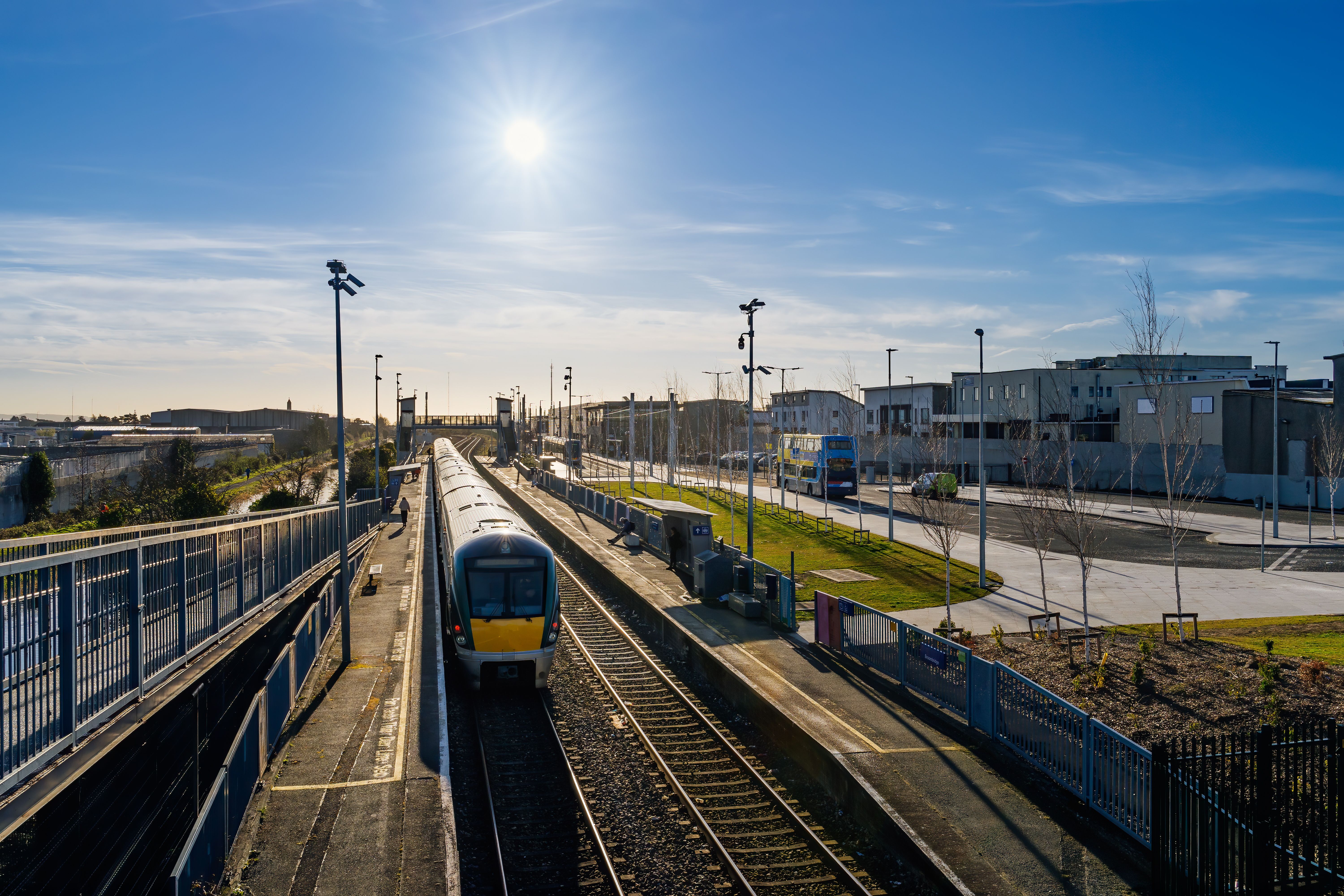Collaboration between the Republic and the North is crucial for the realization of an ambitious project. The All-Island Rail Review, a joint effort by the Department of Transport and the Northern Ireland Department of Infrastructure, has put forward 30 major recommendations. These proposals aim to bring about a “new age of rail” by building new railway lines, reviving abandoned routes, electrifying existing lines, and creating dual and four-track lines to alleviate congestion.
The implementation of these recommendations would lead to significant reductions in journey times, with speeds of up to 200kmh possible. Currently, the limit is 140-160kmh and only applies to certain sections of the rail network. The plan also includes the addition of 650km of railway tracks, connecting towns that currently lack train services and improving existing ones. This would amount to a 28% increase in track length and bring an additional 700,000 people within 5km of a regularly served railway station.
The proposal also envisions an hourly intercity service between all cities, instead of just during peak hours. Furthermore, the aim is to have trains running between large provincial towns at least once every two hours. Rail connections to Dublin, Belfast, and Shannon airports would allow around 90% of airline passengers to conveniently travel to their flights by train. Additionally, freight rail connecting to major ports in Foynes, Waterford, Cork, and Rosslare would help reduce the number of heavy-goods lorries on the roads.
Approximately 75% of the rail network expansion would take place in the Republic of Ireland, with the remaining 25% in Northern Ireland. The estimated cost for the Republic is €27bn, while Northern Ireland’s share would be €9bn. The Cabinet has given initial approval to the review, and it will undergo public consultation until September 29. A final plan is expected to be completed by the end of the year.
The proposed improvements would be implemented over a 25-year period, requiring early acceptance and support from both governments. However, given the current absence of a functioning government in Northern Ireland, this presents a challenge. Nonetheless, the decision was made to publish the review to allow officials to proceed to the next phase of the project. The Department of Transport acknowledges that further feasibility and affordability assessments are needed to inform decision-making.
Critics have raised concerns about costs versus benefits, with Taoiseach Leo Varadkar highlighting the ongoing importance of roads and substantial investment in them. The review estimates that rail journeys, both intercity and freight, will still only contribute a small percentage to overall transportation. However, the Department of Transport believes that implementing incentives and measures to discourage road use would boost these figures.
Transport Minister Eamon Ryan emphasizes the need to decarbonize transport and achieve climate-action goals. He believes that investing in rail will allow for more balanced regional development. While acknowledging the expenses involved, Ryan argues that not investing in rail would be even costlier, resulting in increased traffic congestion and rising emissions. He draws a parallel with previous investments in motorways, stating that Ireland is capable of making such investments.
A century ago, Ireland had over 5,000km of railway tracks, but neglect and disuse caused large parts of the network to deteriorate. The proposed plan aims to revive and utilize the Athenry-Claremorris and Waterford-Rosslare lines, which had been closed for decades. Work has already begun on reopening the old Limerick-Foynes line, and plans include the reinstatement of the Derry line. In the east, new lines would serve Drogheda-Clongriffin, Dublin-Navan, and Hazelhatch-Portarlington. The North Midlands line, connecting Athlone to Portadown via Mullingar, Cavan, Monaghan, and Armagh, represents one of the most ambitious aspects of the plan for cross-border connectivity.
Denial of responsibility! VigourTimes is an automatic aggregator of Global media. In each content, the hyperlink to the primary source is specified. All trademarks belong to their rightful owners, and all materials to their authors. For any complaint, please reach us at – [email protected]. We will take necessary action within 24 hours.


